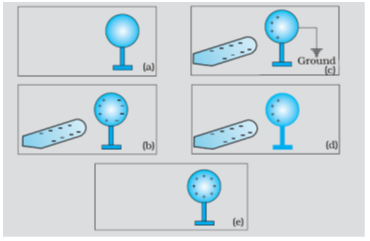Electric Charges and Fields - Online Test

We know that 1 Coulomb = 6.242×1018 eletrons
given 109 electrons take 1 secs
=> 109 electrons ------> 1 sec
=> 1 electrons ---------> secs
=> 6.242×1018 ------>
= 6.242×109 secs = years
=197.93 years= 200 years approx
Two types
- Positivecharge—deficiency of electrons i.e. if a body loses electrons it will be positive charged.
- Negative charge—excess of electrons i.e. if a body gains electrons it will be negative charged
The triboelectric effect (also known as triboelectric charging) is a type of contact electrification in which certain materials become electrically charged after they come into frictional contact with a different material. Rubbing glass with fur, or a plastic comb through the hair, can build up triboelectricity.
When we charge something with static electricity, no electrons are made or destroyed. No new protons appear or disappear. Electrons are just moved from one place to another. The net, or total, electric charge stays the same. This is called the principle of conservation of charge.
If a glass rod is rubbed with silk, some electrons moves from glass rod to silk no new charge is generated or destroyed.
